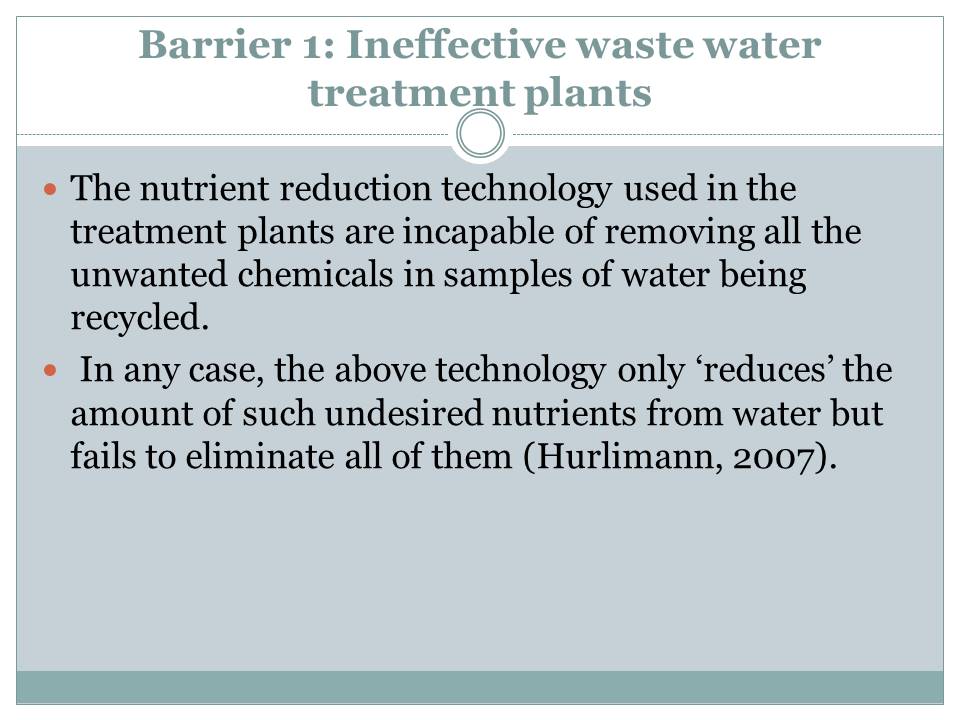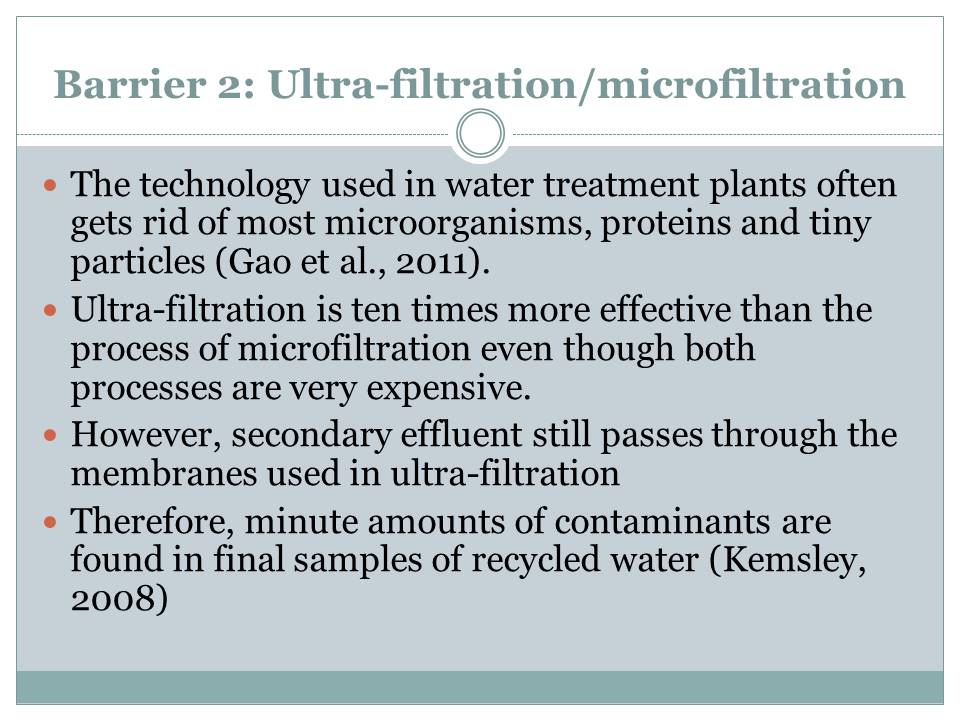Background
Although recycled water is useful for general consumption, it is not safe for drinking.
Recycling is an important procedure which ensures that resources are used economically.
However, how can we be economical with our own health by drinking recycled water?
Most studies unanimously agree that recycled water may be made safe for drinking if boiled before use (Hurlimann, 2007).
Nonetheless, most individuals and households hardly bother to drink boiled water.
Worse still, boiled water lacks vital minerals required in the human body.

What do experts say?
Experts in water management and recycling argue that not all contaminants are eliminated during the de-contamination process.
As a matter of fact, it is not possible to remove all contaminants in the process of recycling used and dirty water.
At the same time, we are usually advised to protect our sewerages by preventing harmful chemicals from gaining access into such systems.
If it is indeed true that all contaminants are done away with during the recycling process in sewerage plants, then the above advisory note is not necessary at all. There are a number of barriers that always work against the desire to obtain safe drinking water from recycling plants.

Barrier 1: Ineffective waste water treatment plants
The nutrient reduction technology used in the treatment plants are incapable of removing all the unwanted chemicals in samples of water being recycled.
In any case, the above technology only ‘reduces’ the amount of such undesired nutrients from water but fails to eliminate all of them (Hurlimann, 2007).
The human body acts like a huge reservoir that never gets filled.
As we consume the minute harmful chemicals, we may not visualise immediate impacts. The compounded negative health effects appear later in life when individuals are diagnosed with various forms of cancer as well as brain and body paralysis.

Barrier 2: Ultra-filtration/microfiltration
The technology used in water treatment plants often gets rid of most microorganisms, proteins and tiny particles (Gao et al., 2011).
Ultra-filtration is ten times more effective than the process of microfiltration even though both processes are very expensive.
However, secondary effluent still passes through the membranes used in ultra-filtration.
Therefore, minute amounts of contaminants are found in final samples of recycled water (Kemsley, 2008).
It is not logical to spend a lot of resources to processes that do not guarantee total safety for drinking water.
Steroid hormones are only partially barricaded through nano-filtration (Kemsley, 2008).

Conclusion
Recycled or reclaimed water is not entirely safe for drinking owing to traces of contaminants that usually pass through during the purification processes.
References
Gao, W., Liang, H., Ma, J., Han, M., Chen, Z. L., Han, Z. S., & Li, G. B. 2011, “Membrane fouling control in ultrafiltration technology for drinking water production: A review”, Desalination, vol. 272, no. 1, pp. 1-8.
Hurlimann, A.C. 2007, “Is recycled water use risky? An Urban Australian community’s perspective”, Environmentalist, vol. 27, no. 1, pp. 83-94.
Kemsley, J. 2008, “Treating Sewerage water”, Chemical & Engineering News, vol. 85, no. 4, pp. 71-72.